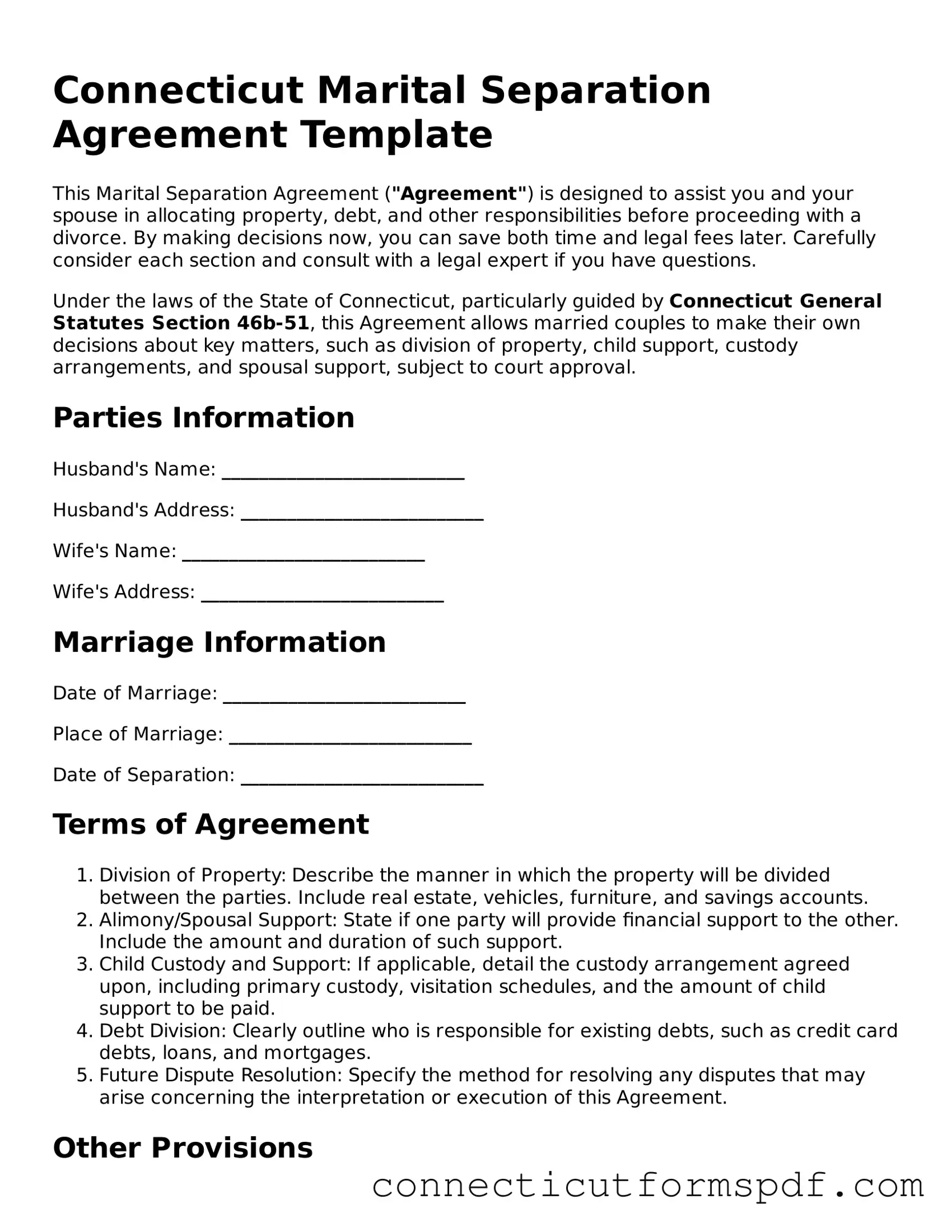Connecticut Marital Separation Agreement Template
This Marital Separation Agreement ("Agreement") is designed to assist you and your spouse in allocating property, debt, and other responsibilities before proceeding with a divorce. By making decisions now, you can save both time and legal fees later. Carefully consider each section and consult with a legal expert if you have questions.
Under the laws of the State of Connecticut, particularly guided by Connecticut General Statutes Section 46b-51, this Agreement allows married couples to make their own decisions about key matters, such as division of property, child support, custody arrangements, and spousal support, subject to court approval.
Parties Information
Husband's Name: __________________________
Husband's Address: __________________________
Wife's Name: __________________________
Wife's Address: __________________________
Marriage Information
Date of Marriage: __________________________
Place of Marriage: __________________________
Date of Separation: __________________________
Terms of Agreement
- Division of Property: Describe the manner in which the property will be divided between the parties. Include real estate, vehicles, furniture, and savings accounts.
- Alimony/Spousal Support: State if one party will provide financial support to the other. Include the amount and duration of such support.
- Child Custody and Support: If applicable, detail the custody arrangement agreed upon, including primary custody, visitation schedules, and the amount of child support to be paid.
- Debt Division: Clearly outline who is responsible for existing debts, such as credit card debts, loans, and mortgages.
- Future Dispute Resolution: Specify the method for resolving any disputes that may arise concerning the interpretation or execution of this Agreement.
Other Provisions
Include any other terms that the parties agree to that have not been covered in the previous sections, such as insurance policies, tax considerations, and any agreed-upon restrictions on future behavior.
Signatures
This Agreement shall only be considered valid and in effect once signed by both parties.
Husband's Signature: __________________________ Date: __________________________
Wife's Signature: __________________________ Date: __________________________
Note: This template is provided for informational purposes only and may not cover all relevant legal aspects. It is advisable to seek professional legal advice to ensure that all legal requirements are met and that the Agreement is properly executed and enforceable under Connecticut law.
